Types of additions to the fauna in 2017
Live Earth is incredibly diverse world: every year thousands of scientists find previously unknown creatures - only in the rain forests of the Amazon new species discovered every two days. 2017 th was no exception - the opening of this year are not inferior to the most daring fantasies.
Wood Rat, Solomon Islands
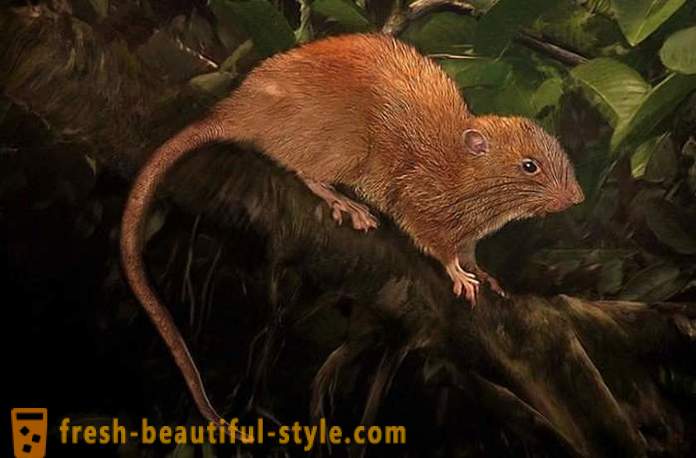
The mysterious creation literally materialized out of the local tales and myths: the inhabitants of the island vangunu scientists have told about the huge rodent vetch, which splits teeth coconuts. And only recently managed to catch an unusual animal, fleeing from a felled tree. DNA analysis has confirmed - this is a whole new look.
Animal is four times more than the usual gray rat: the weight comes to a kilogram, and the length from nose to tail - up to half a meter. Biologists suggest that the giant rat vangunu lives in trees, feeding on nuts and fruit, and doing a hole in a coconut, to reach the pulp and juice. Find these rodents is very difficult - they hide in the dense foliage and are nocturnal. Immediately after the discovery of a rare kind attributed to: because of tropical deforestation is an animal in danger of extinction.
Mole named Trump, USA

This mole is not called shabby: her wings are decorated with yellow spots, and the head - a yellowish-white scales that reminded entomologist Vazrik Nazari hairstyle of the 45th US president. In honor of him, and called the discoverer of the insect: Neopalpa donaldtrumpi. Almost all members of the family of moles vyemchatokrylyh found only in North America, and the new species is distributed in the islands off the coast of California. The title has a political subtext: Nazari hopes that it will attract the authorities' attention to the environmental problems of the region - climate change and urbanization have put the local fauna under threat of extinction.
Sunfish, Pacific Ocean
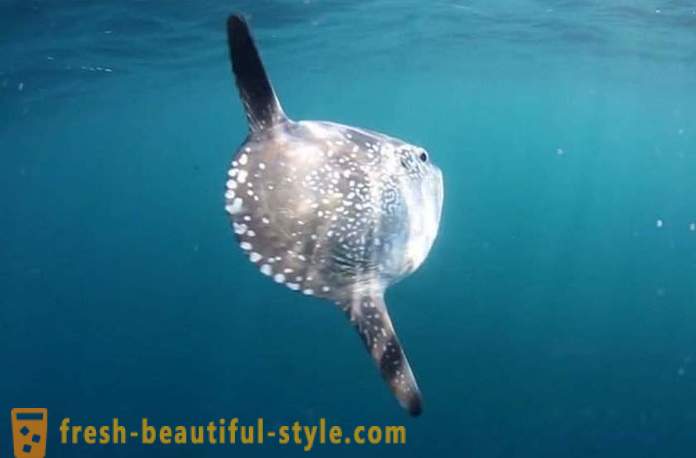
The largest bony fish found off the coast of New Zealand - it grows up to 4 m in length and weighs more than 2 tons of the discovery made by Australian student -. Negard Marianne started to search for the elusive marine life, noticing the genetic differences of 150 samples of solar fish. The research lasted four years, and as a result has been found a new species - Mola tecta.
Despite its size, see sunfish is not easy: it is solitary and prefers remote areas of the ocean. In search of food giant creatures are immersed to a depth of 100 m, and the surface is only lifted in order to bask in the sun - for this they got their name.
tarsiers, Indonesia
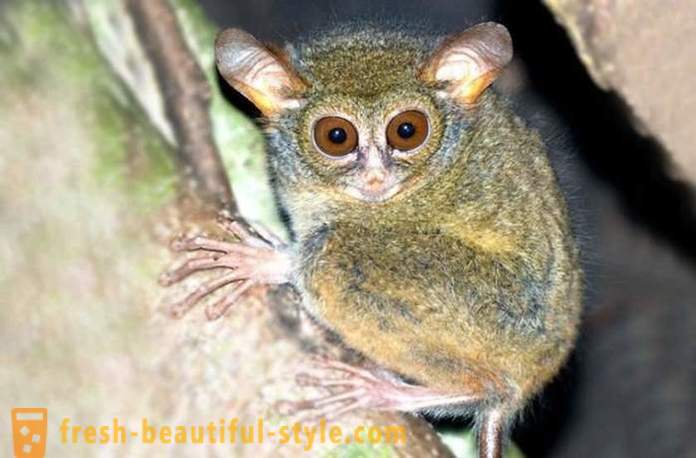
Height 15 cm, weight 150 g - see this little creature is not easy in the tropical jungle. Yet biologists have discovered two new species of miniature primates on the island of Sulawesi. Tarsiers look almost the same: huge eyes, long hind legs and a round head that rotates 180 °.
Animals communicate with ultrasound - they shout at about 70 kHz, and the unequal pitch of the screams allowed scientists to include new tarsiers to two different species. Cute Fluffy is not as defenseless as it seems: they can jump a distance of 40 times their body length, move along the branches quickly with tenacious fingers, prey on insects, lizards, rodents and even small birds.
snapping shrimp, Pacific
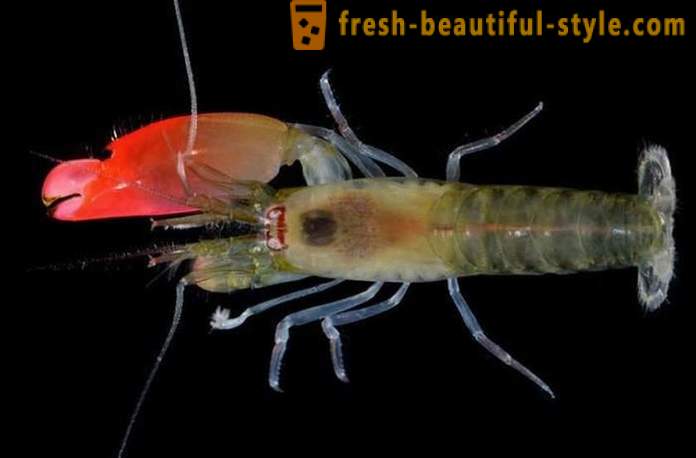
Synalpheus pinkfloydi - such an unusual name of this crustacean owes its pink-red claw. Due to its characteristic hue shrimp named after the rock band Pink Floyd - a scientist idols Sammy De Grave, who discovered the new species.
Asymmetric limb about half the size of the body - a dangerous weapon. Noticing the victim, shrimp snaps pincers and "fires" a jet of water that moves at high pressure creates cavitation bubble. Collapsing, the stuns or kills it small fish: the force arising at the same sound wave reaches 190 dB - both from the supersonic aircraft.
Mini frog without membranes, India

frog the size of a fingernail were found in the forests of India - their length varies from 12 to 38 mm. Biologists searched amphibians five years and found with great difficulty: tiny animals hidden under a thick layer of fallen leaves and shout as insects.
Unlike their larger relatives, living near the water, four new species of night frogs inhabit the wooded foothills of the Western Ghats. Scientists believe that their small size and lack of webbing between the toes - the result of adaptation to terrestrial life. The region, where they found the frogs, different tremendous biodiversity - over the past 15 years it has opened 159 new species of amphibians.
Darwin's finches, Galapagos Islands
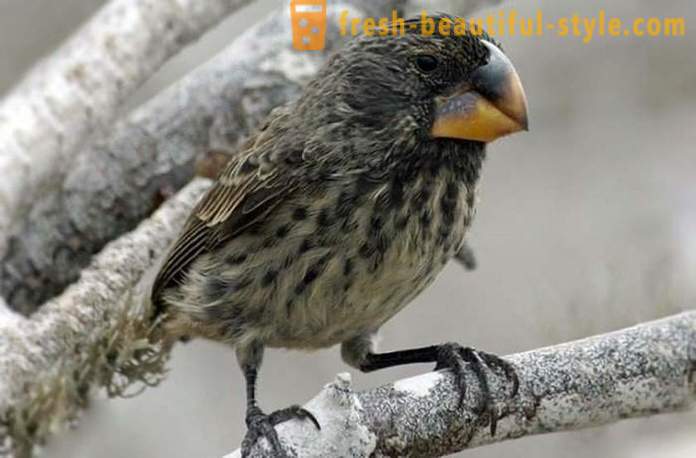
The evolution does not stop: Now a new kind of bird is formed in the Galapagos Islands - Darwin's finches. speciation process began 36 years ago, when the island of Daphne Major, arrived male cactus ground finch. He could not return to his native island, located 100 km from the Galapagos, and crossed with females of local species - medium ground finch. As a result, there were chicks, capable of reproduction, which is not typical for hybrids. Other finches new birds singing and distinguished form the beak. The first generation was not able to find a couple of local birds - females do not recognize their songs. Therefore, the birds mated with each other, enhancing features. So in just two generations on the island formed an entirely new kind of finches, which now totals 30 individuals. It is not known whether newcomers will be able to survive long in the wild.
Shark ghost Atlantic Ocean
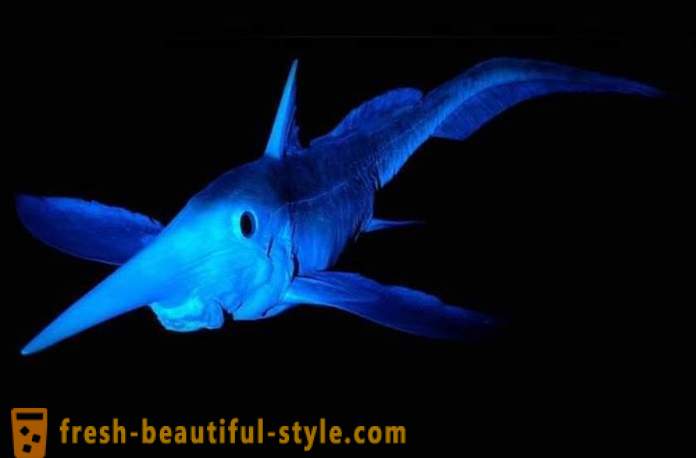
The bulky head, fins, wings and a rabbit teeth - a real sea monster found California biologists in the deep ocean between South Africa and Antarctica. This new kind of ghost shark, which scientists refer to the order of the speaker called chimeras. A Latin family name Hydrolagus ( "Water Bunny"), these fish got out of the unusual teeth with which they open the shells of crabs and other crustaceans. The name "ghost shark" largely conditional: gidrolagi are not sharks, but rather a distant relatives of sharks and rays. View, open this year, unlike their relatives. New chimera larger, much darker and has a number of differences in the structure of the body: the head is very big, and the body tapers to the thread-like tail. This is the second largest species of sharks, ghosts.
Mosquitoes orderlies, Costa Rica
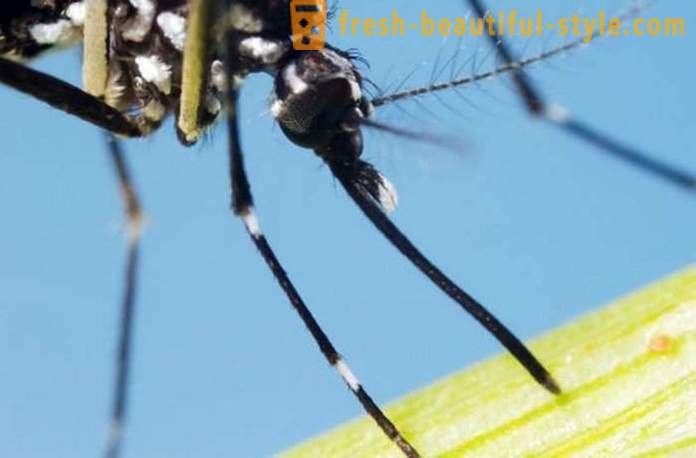
The mosquitoes that do not bite anybody, - it happens sometimes. Five new species of harmless insects, scientists discovered in the tropical rain forests of Costa Rica and Colombia. mosquitoes length - only 2 mm. They actively proliferate due to the hot and humid climate, do not drink the blood of humans and animals and do not spread disease. In addition, small orderlies forests are of great benefit - their larvae feed on the remains of decaying organisms.
Geckos, Myanmar
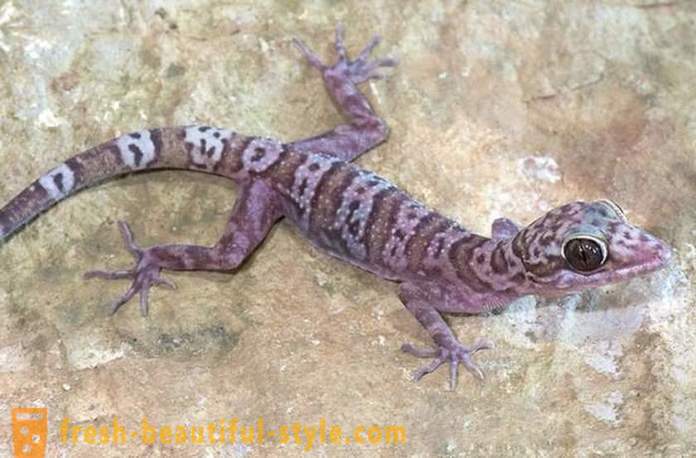
The most large-scale discovery of the year - 19 new gecko species in Indochina. Such a large number of reptiles once before did not find anybody. Lizard inhabit the relatively small area of 90 to 50 km. According to researchers, a unique diversity of species due to the unusual landscape of the area. This lowland coated limestone blocks in height and 400 m. Their surface is penetrated folds and caves. These blocks become peculiar evolutionary islands where isolated gekkony evolved into separate species.
For example, lizards living in the limestone massifs, longer legs and toes and a thin body, than those who live at the bottom. Most found beings belong to two genera: Krivopalov and lygodactylus.













































